| Boron Nitride Nano-Photocatalyst Membrane Filters for the Degradation of Aqueous PFAS to CO₂ and Fluoride (Project 635)
The objective of this effort is the optimization of a photocatalytic degradation system, converting polyfluoroalkyl substances (PFAS)-impacted waste streams, such as impacted drinking water, saltwater, and Aqueous Film Forming Foam (AFFF) concentrates, to carbon dioxide (CO₂) and inorganic fluoride using boron nitride nanomaterials.
|
 |
| Aluminum Conversion Coating Materials as a Trivalent Chromium Post-Treatment for IVD and Cadmium Coastings (Project 634)
The objective of this effort is to develop optimized processing parameters and establish best practices for trivalent chromium post-treatment alternatives to cadmium electroplating and/or ion vapor deposition (IVD) aluminum coatings. The goal is to demonstrate performance equal to traditional chromium-based processes, enabling the transition to more environmentally friendly chemical chemistries.
|
 |
| PFAS Sensor Multi-Site Field Demonstration (Project 632)
The objective of this field demonstration is to validate 2Witech Solutions' per-and polyfluoroalkyl substances (PFAS) field screening system for rapid and cost-effective site assessments. The system comprises a PFAS sensor, analyzer, and consumables. This project aims to evaluate the performance of the system across various PFAS-impacted liquid media and to demonstrate their effectiveness in supporting field investigations and remediation evaluations.
|
 |
| Ex-Situ Stabilization of PFAS-Impacted Soils and Sediments (Project 631)
The objective of this effort is to demonstrate and fully evaluate stabilization and/or solidification (S/S) for ex-situ treatment of per and polyfluoroalkyl substances (PFAS)-impacted soil and sediment.
|
 |
| Passive Samplers for Improved PFAS Source Identification (Project 630)
The objective of this proposed effort aims to identify, demonstrate and evaluate promising per-and polyfluoroalkyl substances (PFAS) passive sampling technologies for monitoring and fingerprinting PFAS source areas.
|
 |
| Assessing Emerging Chemicals of Concern and Loading from Navy Industrial Surfaces (Project 629)
The objective of this project is to pair the demonstration and validation (DEM/VAL) of a water vacuum sampling system (WRASSE) with in-house analytical methods to assess chemical loading on impervious surfaces.
|
 |
| Evaluation of Coastal Restoration Site Resiliency to Natural Hazards (Project 628)
This project will develop a monitoring and modeling framework to reliably forecast of the potential impacts of changing ocean and tidal elevations on Navy restoration sites that retain residual groundwater and soil contamination under long- term management.
|
 |
| Autonomous Multi-Sensor Coastal Site Monitoring System (Project 627)
This project will demonstrate an autonomous multi-sensor coastal site monitoring system using unmanned autonomous vehicles (UAVs) to remotely sense site conditions and collect reports from unattended, underwater sensors deployed at the site to provide a more complete and accurate report of site conditions that improves natural resources management at reduced cost and risk compared to boots-on-the-ground monitoring approaches.
|
 |
| Evaluation of the Mechanisms Driving Persistence of Low Concentrations of Chlorinated Ethenes and Ethanes at Legacy Bioremediation Sites (Project 626)
This project will expand our understanding of the mechanisms responsible for cisdichloroethane (cis-DCE) and vinyl chloride (VC), and chloroethane persistence at impacted sites, specifically looking at the role of sulfur minerology in hindering the bioremediation processes of chlorinated volatile organic compounds (CVOCs). The goal is to develop a decision matrix for Navy remedial project managers (RPMs) to evaluate the potential for continued bioremediation or the need for alternative remedies at these sites.
|
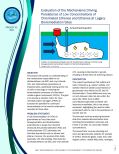 |
| Innovative Solution for Passive Management of Low-Risk Light Non-Aqueous Phase Liquid (LNAPL) Sites by Biochar-Enhanced Natural Source Zone Depletion (Project 625)
The goal of this project is to demonstrate that injecting engineered biochar derived from waste biomass can improve NSZD (natural source zone depletion) for cleaning up LNAPL (light non-aqueous phase liquid), making NSZD a more viable site management solution for the Navy.
|
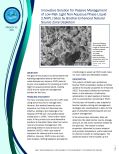 |
| Development of Geodetic Modeling through Unmanned Aircraft Systems to Improve Estimation of Sea-Level at U.S. Navy Installations (Project 624)
This project will utilize unmanned aircraft systems (UAS) to collect high-resolution data to develop more accurate models of potential coastal inundation and flooding at Department of the Navy (DoN) restoration sites.
|
 |
| Assessment Tools for Optimizing Resource Use at Navy Installations (Project 623)
This project will evaluate and prioritize land-based resource accounting tools for Department of the Navy land managers, demonstrating their effectiveness and cost-efficiency through case studies to support informed decision-making and potential implementation.
|
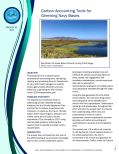 |
| Brush Electroplating Repair of Zinc-Nickel Electroplate (Project 622)
The primary objective of this project is to validate and optimize a brush electroplating repair process for zinc-nickel (ZnNi) and Ion Vapor Deposition (IVD) aluminum applications, with the goal of replacing the current hazardous cadmium-based repair process.
|
 |
| Industrial Ventilation System Assessment and Design Optimization Tool (Project 620)
This effort will develop a digital interactive tool that will enable non-subject matter experts to design, assess, evaluate, troubleshoot, optimize, and configure industrial ventilation equipment, systems, and designs.
|
 |
| Generator Monitoring for Air Compliance (G-MAC) (Project 619)
To develop an automated method for capturing operating time and location for Department of Navy generators, and transmitting data wirelessly to a centralized historian for compliance tracking and monitoring.
|
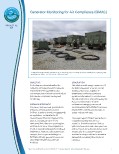 |
| Citric Acid Passivation of Stainless Steels (Project 618)
The overall objective for this project is to successfully demonstrate the performance of citric acid passivation as an alternative to current passivation techniques that use carcinogenic chemicals and strong, heated acids.
|
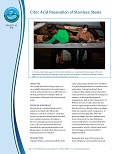 |
| Low-VOC Corrosion Resisting Primer Coating for Navy Aircraft Ground Support Equipment (Project 617)
This project will perform coating application and shipboard testing/validation of a low-VOC, corrosion-resistant primer coating for aircraft ground support equipment (GSE).
|
 |
| Touch Up Repair of Enhanced Trivalent Chromium Coatings (Project 616)
This project aims to verify and demonstrate that hexavalent chromium free touch-up applicators are a suitable alternative with regards to conversion coating repair in a depot setting and an intermediate setting.
|
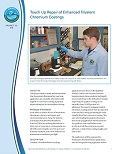 |
| Ex-situ Concentration and Destruction of PFAS from Aqueous Wastes (Project 615)
This project will leverage past knowledge and cutting-edge approaches to destroy per- and polyfluoroalkyl substances in low-concentration wastewater sources of special interest to the Navy.
|
 |
| Comparison of Innovative and Energy-Efficient Technologies for Wastewater Treatment Techniques for Reuse (Project 614)
This project seeks to investigate new cost- and energy-efficient techniques and technologies for wastewater treatment and reuse.
|
 |
| Black Oxide and Phosphate Coating Hexavalent Chromic Acid Rinse Replacement (Project 613)
The objective of this investigation is to evaluate and approve a hexavalent chromium free process for producing black oxide and phosphate coatings on steel surfaces at NAVAIR Fleet Readiness Centers (FRCs).
|
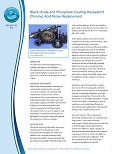 |
| Investigation of Alternative Plants as a Replacement of Current Airfield Vegetation Regimes (Project 612)
The objective of this study is to enhance safety and reduce costs and airborne pollutants by finding an alternative to the current vegetation standards at airfields.
|
 |
| Hydrodynamic and Hydrologic Modeling Toolkit (Project 611)
This project seeks to further develop groundwater modeling capabilities to equip site/facility managers with the scientific knowledge they need for accurate research, development and decision-making.
|
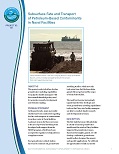 |
| Evaluation of Existing and Required Pierside Infrastructure to Accommodate Shoreside Collection and Treatment of Navy Vessel Ballast Discharges (Project 610)
The objective of this project is to create an initiation decision report (IDR) that investigates and identifies gaps in pierside infrastructure availability that may affect readiness for receiving offloaded ballast water.
|
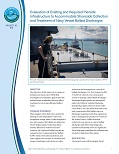 |
| Oxsol-Free and Low-VOC Surface Ship Topside Coatings (Project 609)
The objective of the project is to test Oxsol-free and low volatile organic compound (VOC) polysiloxane topcoats to the majority of MIL-PRF-24635, Type V/VI performance requirements, demonstrate and validate their performance in the field compared to a qualified topcoat, then transition to the fleet.
|
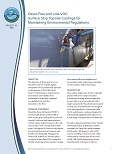 |
| Application of Supercritical Water Oxidation to Destroy Per and Polyfluoroalkyl Substance Impacted Waste Streams (Project 608)
The objective of this project is to demonstrate the efficacy of a mobile system to destroy per and polyfluoroalkyl substances (PFAS) in aqueous PFAS-impacted media.
|
 |
| Artificial Intelligence for Compliance Monitoring (Project 607)
The objective of this effort is to demonstrate the capability of artificial intelligence (AI) and machine learning (ML) to predict the risk of an installation experiencing a future Notice of Violation (NOV) or noncompliance event.
|
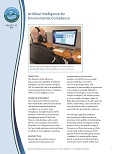 |
| XCPC Solar Thermal Evaporation for PFAS-Impacted Wastewater Minimization (Project 606)
The goal of this project is to demonstrate and evaluate a solar thermal evaporation system comprised of commercial off-the-shelf (COTS) thermal evaporators combined with a solar thermal system for the purpose of minimizing per and polyfluoroalkyl substances (PFAS) found in wastewater at Department of Defense (DoD) facilities.
|
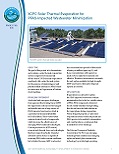 |
| 3D Printed Cone Spray Ionization Mass Spectrometry for the Rapid, Low-Cost, and In Situ Detection and Mapping of PFAS in Soil (Project 605)
This project has four objectives: to compare 3D printed cone spray ionization mass spectrometry (3D PCSI-MS) to traditional liquid chromatography mass spectrometry (LC-MS) methods, to develop an autosampler for easier sampling, to field test the new methodology and develop a robust standard operating procedure (SOP).
|
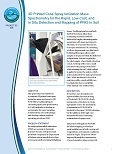 |
| An Integrated Navy Approach to Estimate Risk and Cleanup Goals for Radionuclides Associated with Buildings at Current and Former Navy Installations (Project 604)
The purpose of this effort is to develop a Navy-wide approach for estimating risk and calculating cleanup goals for radiologically impacted buildings.
|
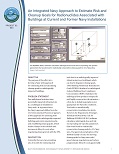 |
| Characterization of Antifouling Paint and Associated Contaminant Loading with Navy Dome System (Project 603)
The goal of this project is to test copper release rates of various types and ages of antifouling hull coatings at Navy harbors to better support regulatory standard setting.
|
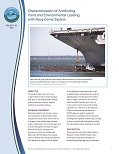 |
| Closed Loop, In Situ Soil Flushing at PFAS-Impacted Source Zones (Project 602)
The goal of this effort is to demonstrate that in situ soil flushing, used in conjunction with sorption and destructive treatments, is a viable method for the removal and subsequent destruction of polyfluoroalkyl substances (PFAS) from affected soil.
|
 |
| Chronic Toxicity and Bioaccumulation Assessment of Multiple PFAS for Marine Species (Project 601)
The objective of this study is to produce acute and chronic toxicity and bioaccumulation data for 10 priority polyfluoroalkyl substances (PFAS).
|
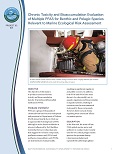 |
| Advanced Anodize Repair (Project 600)
This project seeks to promote and demonstrate two technologies as suitable replacements for hexavalent chromium-based formulas for the repair of anodized aluminum coatings.
|
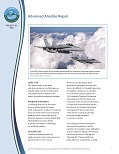 |
| Pathways for Addressing Opportunistic Premise Plumbing Pathogens at Navy Installations (Project 599)
This project team is studying ways to reduce or eliminate Opportunistic Premise Plumbing Pathogens (OPPP) in drinking water at U.S. Navy facilities.
|
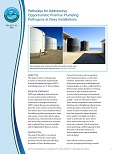 |
| Minimizing Hazardous Waste from Expired Paints and Associated Solvents from Ships’ Supply (Project 598)
The objective of this study is to minimize the amount of hazardous waste produced by expired paints and associated solvents originating from ship supplies.
|
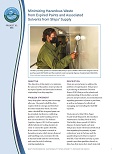 |
| Alternative Oil Skimming Technologies for Afloat Oil Spill Response: Downselection and Demonstration at a Navy Port (Project 597)
The goal of this effort is to determine if remotely operated oil spill response (OSR) skimming equipment and other alternative technologies can respond to on-water oil spills more effectively than existing equipment with respect to safety, cost, speed, oil recovery rate and maneuverability.
|
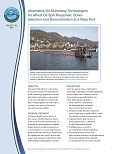 |
| Integrated Analytical Approach to Transition from Active to Passive Treatments at Munitions Sites (Project 596)
This project is developing a protocol to ease transition from active to passive remediation at Navy sites contaminated with munitions constituents.
|
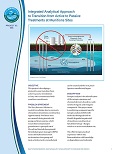 |
| Demonstration of a Signal Activated Bottom Lander Trap (Project 595)
The objective of this project is to develop and demonstrate an automated technology that can aid sediment remediation efforts by targeting specific particle discharge or resuspension events.
|
 |
| Demonstration and Application of Amendments Targeting Comingled Organics and Metals in Sediments (Project 594)
The objective of this work is to demonstrate and validate performance and stability following placement of reactive amendments for in situ treatment of comingled organic and metal-contaminated sediments at Navy facilities.
|
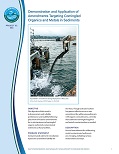 |
| Evaluating Potential Effects to Marine Biota from Small-scale, Legacy Radioactive Objects (Project 593)
This project was formed to evaluate the potential for detrimental effects on marine biota of small-scale objects containing radioactive material relevant to the U.S. Navy.
|
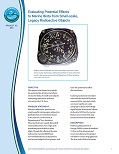 |
| Demonstration of the Robust Caisson Structure to Reduce Blast Effects from Underwater Blow-in-place (Project 592)
This project is field testing the effectiveness of a robust caisson structure to reduce blast effects from underwater explosions.
|
 |
Locating and Quantifying Groundwater Surface Water Connections Using Distributed Temperature Sensing (Project 591)
Final Report: Open/Download
The objective of this study is to demonstrate the capability of a distributed temperature sensing (DTS) system to provide high resolution identification of seepage locations at a relevant Navy site.
|
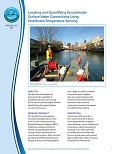 |
| Dry Ice Paint Removal and Cleaning (Project 590)
The objective of this investigation is to evaluate whether dry ice can be utilized at Fleet Readiness Centers as an effective, non-hazardous friendly alternative to the use of plastic media blasting (PMB) for cleaning and organic coating removal.
|
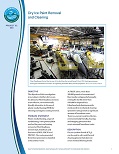 |
| Effluent Copper Quantification by Optical or Voltammetric Detection and Analysis (Project 588)
The goal of this project is to demonstrate a methodology for rapid quantification of copper in seawater using an optical or voltammetric detection and analysis system.
|
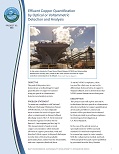 |
| Detection Methodology and Treatment Train Technology for PFAS Removal in Bilge and Oily Wastewater (Project 587)
This team plans to develop and validate a detection methodology for perfluoroalkyl and polyfluoroalkyl substances (PFAS) in bilge and oily wastewater (BOW) and to demonstrate and validate a two-part treatment technology.
|
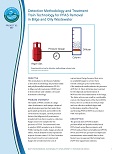 |
| Chrome-free, Low-VOC and Fast-Drying Single- and Two-component Primers (Project 586)
The objective of this project is to test and evaluate rapid-cure, chromatefree, and low-volatile organic compound (VOC) solvent-based primers that meet the requirements for use on tactical Navy aircraft, such as the F/A-18 Hornet jet fighter, the AV-8 Harrier groundattack aircraft, the UH-1Y Venom utility helicopter and the AH-1Z Viper reconnaissance helicopter.
|
 |
| High Efficiency Media for Metals Removal in NPDES Discharges (Project 585)
This project team is evaluating the performance of one specific filtration media for removing metals from various discharges and sources, including stormwater runoff and other shipyard activities, to help maintain regulatory permit compliance. The team also aims to expedite field deployment of the media during the first year of the effort.
|
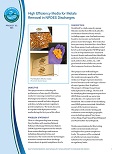 |
| Real-time Multi-contaminant Detection System (RMDS) (Project 584)
This project is developing an integrative approach that will enable near real-time monitoring of constituents of concern at shipyard drydocks.
|
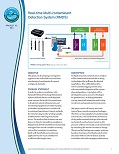 |
| Low-profile Integrated Porous Pretreatment Swale (LIPPS) for Metals Treatment in Industrial Areas (Project 583)
The objective of this effort is to provide a passive, industrial, low-profile and innovative stormwater management solution (LIPPS) that will allow users to target specific pollutants of concern and operate in multiple platforms.
|
 |
| Sensor Interface and Infrastructure for Monitoring (SIIM) (Project 582)
This team is developing an integrative approach for near real-time wastewater monitoring that ensures more accurate analytics and data visualization and reduces the manpower requirements associated with current processes.
|
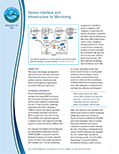 |
| Assessment of Cadmium Alternatives for Connector Applications (Project 581)
The project is assessing the performance issues surrounding zinc-nickel and other cadmium-alternative plating technologies for Electrical Wiring and Interconnect System (EWIS) components. Conductivity, wear resistance and corrosion resistance will be assessed including the questions associated with the mating and demating these components with legacy cadmium-plated components.
|
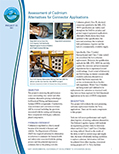 |
| Development and Implementation of Methods to Reduce Sealant Waste in Fleet/Depot Level Operations (Project 580)
The primary aim of this project is to develop simple test protocol for assessing aircraft sealant usability and demonstrate its effectiveness with the intent of reducing hazardous waste and improving Fleet readiness.
|
 |
| In-situ Biodegradation of 1,4-Dioxane and Chlorinated Solvent Mixtures in Dilute Plumes (Project 579)
The objective of this effort is to demonstrate that soluble, food grade substrates, including specific organic acids or alcohols, can be used to promote the in situ cometabolic treatment of 1,4-dioxane and chlorinated volatile organic compounds. Field evaluations using single-well-push-pull tests will be performed at a selected Navy site where the aquifer is contaminated with both substances.
|
 |
| Mesocosm Field Testing of In-situ PFAS Treatment Trains (Project 578)
This project team plans to demonstrate an efficient method to evaluate promising in situ adsorptive amendment materials to tackle the problem of per- and polyfluoroalkyl substances in groundwater.
|
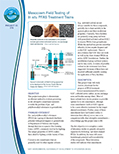 |
| Demonstrating the Use of a Novel, Hybrid Polyelectrolyte/Hydrophilic Polymer for In-situ PFAS Treatment Applications (Project 577)
The goals of this demonstration are to study the use of polydiallyldimethylammonium chloride (polyDADMAC) as a potential PFAS plume retardant for in situ applications and understand any site-specific factors which may influence PFAS binding to polyDADMAC over time.
|
 |
| In-Pipe Stormwater Treatment System (Project 576)
The objective of this project is to evaluate the efficacy of a novel in-pipe treatment system to aid with stormwater permit compliance.
|
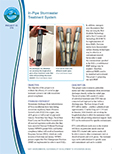 |
| Contaminant Monitoring and Mapping for Informing Stormwater Best Management Practices (Project 575)
This project will demonstrate a handheld technology to identify and quantify sources of copper and zinc in stormwater runoff that provides the information needed to optimize the Best Management Practices (BMP) designed to mitigate those sources.
|
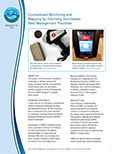 |
| Developing Lines of Evidence to Support Nutrient Compliance (Project 574)
To facilitate the development of reasonable Total Maximum Daily Load (TMDL) requirements, this project is developing an approach to identify all nutrient sources that contribute to total discharging outfall nutrient loads and engage regulators in the process.
|
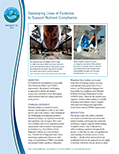 |
| In-Well Headspace Samplers for Long-Term Groundwater Chlorinated Hydrocarbon Monitoring (Project 573)
This project will validate the use of commercially available passive samplers for long-term monitoring of groundwater contaminant concentrations.
|
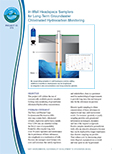 |
| Flexible Under Pier Sediment Assessment (Project 572)
This project will develop a simple and cost-effective solution to ascertain the potential magnitude of recontamination occurring from unremediated underpier sediments slumping into dredged and/or remediated areas between piers.
|
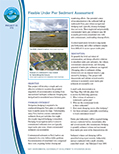 |
| Innovative Activated Carbon Filters to Address Vapor Intrusion within Commercial/Industrial Buildings (Project 571)
This project will demonstrate and validate an air filtration system that will remove trichloroethene (TCE) from indoor air and then provide Remedial Project Managers (RPM) with a guide to the optimal selection, operation and maintenance of air purifying filters for vapor intrusion (VI) mitigation.
|
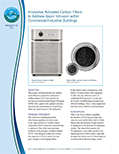 |
| Improve Cost Effectiveness of Groundwater Monitoring with Long Duration Time-Integrated Groundwater Samplers (Project 570)
This project will demonstrate application of a time-integrated sampler for measurement of volatile organic compound (VOC) concentrations in groundwater.
|
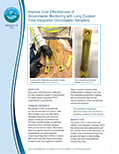 |
| Field Demonstration of Colloidal Activated Carbon for In-situ Adsorption of Per- and Polyfluoroalkyl Substances (Project 569)
The primary objective is to demonstrate and validate the field application of colloidal activated carbon for in situ adsorption of per- and polyfluoroalkyl substances (PFAS) in groundwater, thus mitigating migration of these compounds.
|
 |
| Evaluation of Various Real-Time Monitors to Accelerate On-Site Analysis for Vapor Intrusion (Project 568)
The purpose of this project is to identify the most reliable on-site mobile analyzer for indoor air and soil gas samples to be used as tool to expedite vapor intrusion (VI) investigation. Project investigators will identify and validate alternative commercial-off-the-shelf (COTS) instruments for implementation of this proven and effective approach to investigate the VI pathway.
|
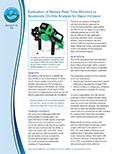 |